If something is not spiritual, then its opposite can be seen as nihilistic. There is a good possibility at that television and mass market entertainment is for the most part, rooted in Dadaist thought. The ready-made, the generic; the abolition of logic and its replacement by spontaneity. “We want to shit in different colors to adorn the zoo of art.” (Tzara ) That is , the most offensive, the most wasteful and destructive, the more positive the reflection, and greater the power of the broadcast companies and entertainment complex’s which produce the material, or “content” as it is termed.
When Dadaism arrived full-fledged in America, via Pop art, pop culture, it no longer had a rationale; it was no longer the articulation of a moral revolution, but instead, an artistic ploy. Nothing but an artistic ploy. Navel gazing artistic ruminations, sometimes combattively artistic but no longer a combat, a fight with society. There was an emotional vigor in the beats but with Warhol and the expansiveness of television, there was no moral rigor to speak of. No longer a moral reaction to a destructive and violent society. Instead, it transformed into a sort of tongue-in-cheek cleverness, what is cutesy: ingratiating and superficial: the facile knowingness about signs and symbols. Pop art and by extension pop culture was a tame travesty of original Dadaism, with the cheeky and fresh replacing nihilism.Do you want a Hawaiian punch?
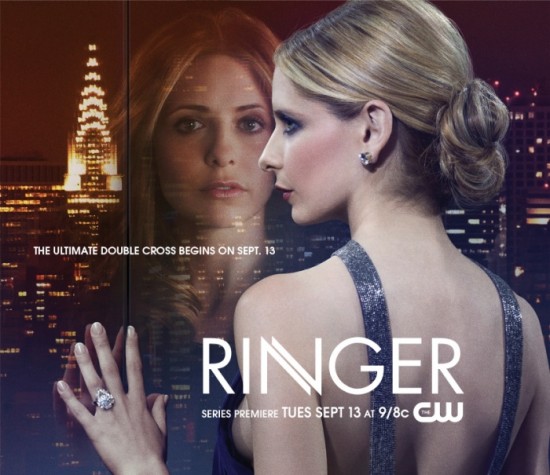
--- As Rebellious Pixels said while watching the episode, “This is an impressive level of bad”. The episode starts with a scene portraying violence against women. Then we find out that the season’s villain is a Native American man. It is so entirely rare to see indigenous folks on TV shows, and the few times we do, they are often portrayed as evil, manipulative, casino owners, or magical and this case is no different.--- Read More: As Rebellious Pixels said while watching the episode, “This is an impressive level of bad”. The episode starts with a scene portraying violence against women. Then we find out that the season’s villain is a Native American man. It is so entirely rare to see indigenous folks on TV shows, and the few times we do, they are often portrayed as evil, manipulative, casino owners, or magical and this case is no different. Read More:http://www.feministfrequency.com/2011/09/fall-television-premieres/#more-1889
To this, the richness of our pop culture, much is owed to Marcel Duchamp. After all, Dadaism was based on promoting to the respectability and status of art manufactured products not ordinarily perceived as art. Indeed, Duchamp’s urinal was the promotion and displaying as art industrial objects that had little to do with esthetics and taste, as Duchamp acknowledged. Duchamp’s piss pot and the confluence of toilet humor. Must be a connection somewhere. Under the toilet seat. Unflushed, we can see that when Donald Kuspit called Duchamp a terrorist and a fetsih object, a disruptive influence on art, that Dadaism would become a perverted influence on pop art, by absorbing itself into consumerist culture through its structural alignment as seen in the de-idealization of the body and by urinating on the aura of sacredness and promoting the fetish in place. Abstract art and Dadaism changed the definition of art, — already in ambiguous territory with Cubism and Expressionism — by not resembling art, not reflecting the world the way art was supposed to. It reached beyond the conventional understanding of art to give it a new understanding of itself. An pop culture, television culture would be the continuous recycling of this understanding…
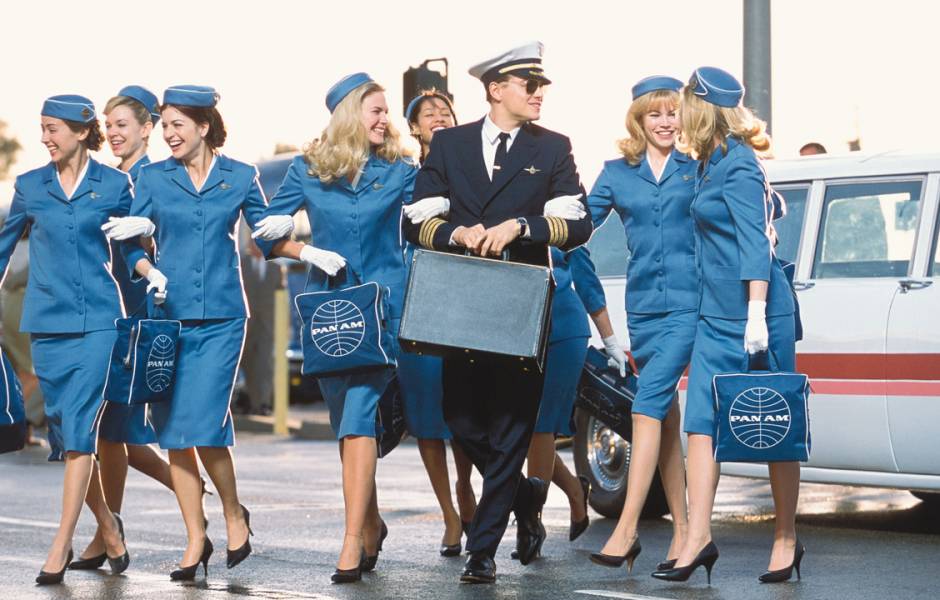
---In the United States, the moral and spiritual nonconformity of Dadaism and abstraction dissipated into ironic social conformity -- Horkheimer notes that "abstract pictures are now simply one element in a purposive arrangement," that is, "pure wall decoration" with no mystery to them -- even as their methods became more refined. The overt destructiveness of world war bypassed the United States, but the subtle destructiveness of materialism remained alive and well in it.---Read More:http://www.artnet.com/magazineus/features/kuspit/kuspit2-17-06.asp image:http://17sixteen.wordpress.com/tag/tv/
Women’s empowerment is the buzz issue in television right now. Women viewers are sought by broadcasters and advertisers and copious amounts of money are spent on arriving at “product” to reach these viewers. Even if the number of women involved were to increase, the structure of the industry would not permit a changing of format or code. The colonialist spirit and the engendering of aping behavior would prevail. It explains that with all the effort to “reach ” this “market” the results seem to reinforce the worst tendencies of white patriarchy, male-centric values; consumerism, sexism and so forth. As is it designed to do. There are always just enough slight exceptions to confirm the rule. But, the uneasy feeling is that within the structure of mainstream television, where every second of air time must be quantified, there is no room for the transcendental, the poetic, the artistic or the beautiful. Its commercial craft. Generic. There is form but no art.
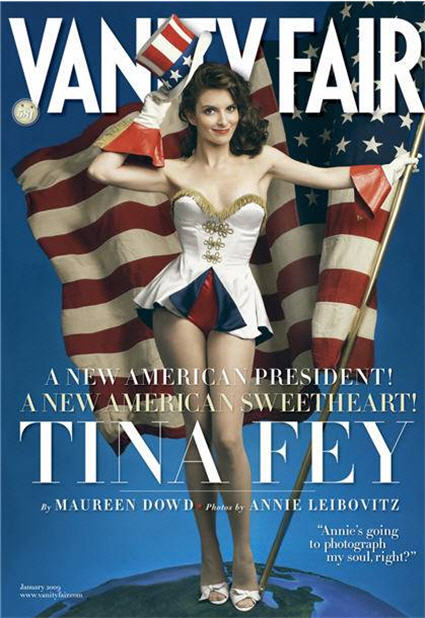
---Curtis Sittenfeld had Hitchens in mind. "At the risk of sounding like the feminist police, I confess that I wasn't sure before now of Ms. Fey's place in the sisterhood," she writes in The New York Times. "After all, her 30 Rock character straddles a fine line between role model and pathetic stereotype of single womanhood." But in reading Bossypants, Sittenfeld realized that the very fact that Fey is so funny and successful, making jokes about everything from farts to Sarah Palin, demonstrates a certain kind of feminism. Here, an excerpt: Ms. Fey's priorities in writing a memoir appear to have been flatulence jokes first and feminist consciousness-raising second. But what she manages to demonstrate, something I'm not sure I'd ever realized, is that flatulence jokes are a form of feminist consciousness-raising. That is, Ms. Fey's rebuttal to Christopher Hitchens's much-discussed 2007 Vanity Fair column about the unfunniness of women can be brief ("It is an impressively arrogant move to conclude that just because you don't like something, it is empirically not good.---Read More:http://theweek.com/article/index/214103/tina-feys-fart-joke-feminism image:http://www.yourcelebritystuff.com/category/tina-fey/
John Doyle:Gloria Steinem called for a boycott of … The Playboy Club. “I hope people boycott it. It’s just not telling the truth about the era,” the feminist icon said. She should know. She went undercover as a Playboy Bunny in the early sixties to write an exposé about working conditions at the New York branch of the club. Some people will say Steinem did the show a favour by giving it publicity. But the fervour of her distaste underscores what has become the overriding theme of the U.S. network season: women and how they are depicted in mainstream TV. And the season hasn’t even started yet. Who knows what fires will erupt when people actually see The Playboy Club, Pan Am, 2 Broke Girls, I Hate My Teenage Daughter and a dozen other shows that are about, and aimed at, women. If the whispers, rants and ruminations of critics are to be believed, so many of these shows are about female empowerment. Read More:http://www.theglobeandmail.com/news/arts/television/john-doyle/forget-female-empowerment-how-about-female-employment/article2139336/
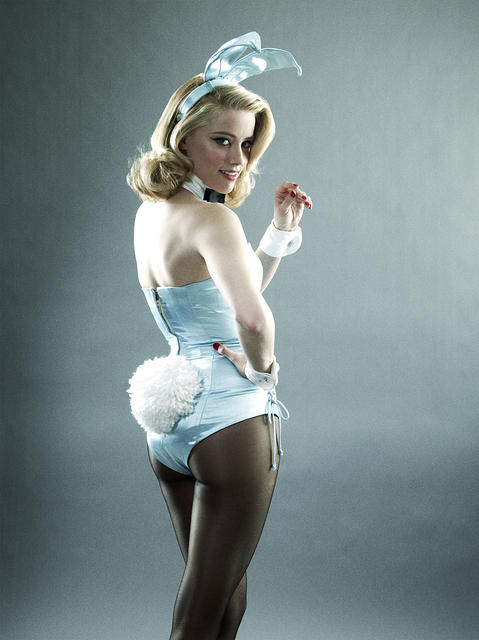
---We wish to glorify War -- the only health giver of the world -- militarism, patriotism, the destructive arm of the Anarchist, the beautiful Ideas that kill, the contempt for woman. We wish to destroy the museums, the libraries, to fight against moralism, feminism and all opportunistic and utilitarian meannesses. F. T. Marinetti, "Initial Manifesto of Futurism," February 20, 1909--- Read More:http://www.artnet.com/magazineus/features/kuspit/kuspit2-17-06.asp image:http://themitchatron.blogspot.com/2011/07/upcoming-playboy-club.html
Feminist Frequency: …It’s that time of year again when we get excited for all the new TV shows only to be terribly disappointed that they’re basically the same stories and characters recycled and repackaged. This year’s fall line up has been getting a lot of buzz about how many women-led shows are being created and aired….
…Of this season’s new sitcoms, 2 Broke Girls was one of the more highly anticipated. Sadly though, it was pretty much awful. While Max’s character could almost be interesting and almost be dynamic, she just wasn’t. They had an older black man in the background who occasionally spoke, and when he did, he said mostly highly offensive jokes. I think the breaking point for me however was near the very end of the episode when one of the kitchen staff sexually harasses Max. While previous harassment on the show was met with disdain and antagonizing remarks, this time Max expressed appreciation for her perpetrator’s sexist commentary as it alleviated her newly heartbroken emotional state. This scene insists that women with low self esteem appreciate sexual harassment and will view objectification as a compliment, deeming harassment acceptable in ‘certain’ circumstances….Read More:http://www.feministfrequency.com/2011/09/fall-television-premieres/#more-1889

---In On the Spiritual in Art (1911) -- the bible of abstraction, as it were -- Kandinsky declared that pure abstract art is "one of the most powerful agents of the spiritual life" in its protest and struggle against "the long reign of materialism... the whole nightmare of the materialistic attitude." In "Dadaist Disgust," in the final section of his Dada Manifesto (1918) (the argument begins with a section titled "Dada Means Nothing"), the poet Tristan Tzara stated that Dada is "a protest with the fists of its whole being engaged in destructive action." "Every product of disgust capable of becoming a negation... is Dada," he declared. Tzara’s rabid negativism re-appeared two years later in Francis Picabia’s Dada Manifesto, which, after trashing Cubism -- "cubed paintings of the primitives, cubed Negro sculptures, cubed violins, cubed guitars, cubed the illustrated papers, cubed shit," all designed to "cube money" -- declared that "Dada itself wants nothing, nothing, nothing, it’s doing something so that the public can say: ‘We understand nothing, nothing, nothing.’" Read More:http://www.artnet.com/magazineus/features/kuspit/kuspit2-17-06.asp image:http://www.daemonstv.com/2011/05/18/2-broke-girls-cbs-first-look/
…I don’t really know what to say about this show; it’s everything I expected it to be. Horrible, offensive, oppressive; sexualizing, eroticizing and objectifying women and a white-washed revisionist history. One of the first scenes, of course, utilizes violence: “Bunny” Maureen is shown physically fighting off an attempted rape. What did strike me as interesting (in an entirely patriarchal way) was that the main character, Nick Dalton, a regular patron and key holder of the Playboy Club, is portrayed as a rich, successful, womanizer who values “smart” women and actively supports civil rights….
…Okay so New Girl made me laugh a couple of times. I’m a huge Dirty Dancing fan so this episode had a couple of entertaining moments, but overall the show dwindles into “men are from Mars, women are from Venus” territory very quickly. The creators are using the Hot Goofy Chick and The Manic Pixie Dream Girl tropes (what Zooey Deschanel is best known for) to pit her against what it means to be a “proper woman”. Jess is clearly attractive by Hollywood standards so the writers have created very contrived scenarios to show how socially awkward she is, and therefore not conforming to traditional ideals of femininity. Playing against traditional gender roles could be an interesting concept, but that is not what this show is doing. At nearly every turn the creators reinforce that she needs to learn to be a “woman” and conform to conventional standards of feminine behaviour…. Read More:http://www.feministfrequency.com/2011/09/fall-television-premieres/#more-1889
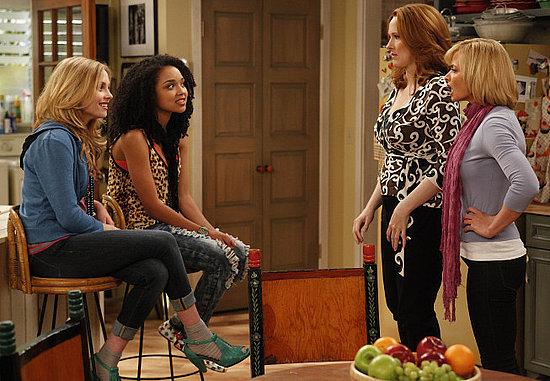
---Dada painter and historian Hans Richter put it this way: ‘The devising and raising of public hell was an essential function of any Dada movement, whether its goal was pro-art, non-art, or anti-art. And when the public, like insects or bacteria, had developed immunity to one kind of poison, we had to think of another.... Spontaneity, then, meant offending the public and disturbing the peace -- the peculiarly artificial, stilted peace of a neutral country surrounded by countries vigorously at war. But it also meant rebellion against social, political and artistic propriety and authority: Decorum was replaced by confrontation, entertainment meant transgression. All that was cherished as civilized was now mocked and challenged. Read More:http://www.artnet.com/magazineus/features/kuspit/kuspit2-17-06.asp image:http://www.buzzsugar.com/I-Hate-My-Teenage-Daughter-Pilot-Review-17962489
…Revenge (ABC) Before even watching an episode I knew I would hate everything about this show. I really hate revenge story lines. I really hate the manipulative, conniving woman trope. And I loathe stories about how hard it is to be rich, especially when the woes of wealth are fed through catty, white female characters. So basically, this is not the show for me. I was however surprised by how it kept my attention….
…Whitney (NBC) Critics predicted this show to be pretty bad, but nothing could have prepared me for the mess of horrible it really was. The jokes were terrible, the acting was terrible, and the laugh-track was painful. In essence this was yet another show with a neurotic, “crazy” woman and her sweet, sensible, tolerant boyfriend. There was a joke in there somewhere about how Whitney’s boyfriend had sex with her while she was unconscious, but how that was okay because it was their anniversary. Note to screenwriters: people in the real world call that rape. At one point Whitney dresses up as a “sexy nurse” to reinvigorate their sex life, and while the whole sexy nurse concept is frustrating in and of itself, they depict Whitney as not doing sexy “right” further playing into the neurotic, ‘crazy’ woman stereotype. The creators also threw in The Asshole Guy (similar to New Girl) with Whitney’s friend at the wedding, again showing the other characters shame him for being sexist, yet they’re still hanging out with him and his behavior doesn’t change…. Read More:http://www.feministfrequency.com/2011/09/fall-television-premieres/#more-1889

---Kuspit:The Dadaists were too violent and negative to be new humanists, and they rationalized their knee-jerk anti-establishmentarianism as an individual right, but they were clearly opposed to the old humanism and the old totalitarianism of representation. The war released a tide of barbarism and violence into the 20th century that has still not retreated, and Dadaism was part of that tide. The war aroused contempt for the values and rules of civilization, and Dadaism shared that contempt. It introduced the idea that being uncivilized made one creative -- that barbaric transgression was artistic. These ideas remain enormously influential in art: The Dadaist attitude remains alive and well to the present day. If, as the historian Eric Hobsbawm writes, barbarism means "the disruption and breakdown of the systems of rules and moral behaviour by which all societies regulate the relations among their members," then Dadaism represents the complete breakdown of the system of rules that had prevailed in art, and its new amorality. Dadaist spontaneity eventually became a tyranny in Abstract Expressionism, Dadaist individuality a joke in amoral Pop art, and Dadaist irony fashionably de rigueur in Conceptual Art. All three have a certain element of barbarism about them, and do violence to the traditional idea of art.--- Read More:http://www.artnet.com/magazineus/features/kuspit/kuspit2-17-06.asp image:http://www.daemonstv.com/2011/05/16/whitney-nbc-trailer-with-chelsea-latelys-whitney-cummings/
…Pan Am (ABC) Let’s address this whole retro nostalgia for the 60’s thing that is flooding US television. The 60’s was a great time if you happen to be rich, white, American, a man and straight – for almost everyone else it kind of sucked, it especially sucked for women and people of colour. So this all-white-middle-class-privileged 60′s revival that is going on right now to capitalize on the popularity of Mad Men is offensive at best. Pan Am is revisionist history pure and simple, they have created a clean and glorified, sexy version of the 60’s that never existed.
This show follows around a group of Pan Am flight attendants who are really nothing more then glorified waitresses in the sky wearing cute outfits serving the rich. While the writers have conveniently ignored any race issues during the pilot episode, they certainly haven’t forgotten about the Cold War and we quickly learn that one of the flight attendants is a super secret CIA spy, (which is another pet peeve of mine: depicting the CIA as the “good guys” in the battle to do justice around the world… because they are really not the good guys).
We see the Pan Am flight attendants being weighed and critiqued on their appearance and as audience members, we are supposed to be appalled (“My God, look at the rampant sexism!”). But just a few scenes later we “ooooh” and “awww” at how fun and cute they look in their matching outfits during their slow motion walk through the airport. We are supposed to love and admire the retro throw-back appearance and style, yet we are also supposed to be appalled about the way that appearance gets manufactured!? You can’t have your cake and eat it too. These women trade the ability to make money and travel the world with being put on display, and this, of course, is not critiqued…. Read More:http://www.feministfrequency.com/2011/09/fall-television-premieres/#more-1889
ADDENDUM:





 COMMENTS
COMMENTS